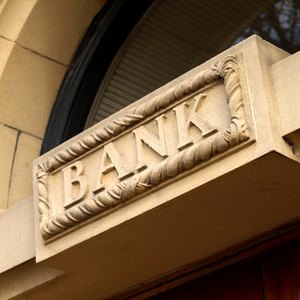
Securitized debt instruments are the products of securitization, which in turn is the process of passing debts onto entities that in turn break them into bonds and sell them. As of 2010, the most common form of securitized debt are mortgage-backed securities, but moves are being made to securitize other debts, such as credit cards and student loans.
Securitized debts have the benefit of lowering interest rates and freeing up capital to banks, but they have the drawback of encouraging lending for purposes other than long-term profit.
Process
Securitized debt instruments are created when the original holder (like a bank) sells its debt obligation to a third party, called a Special Purpose Vehicle (SPV).
The SPV pays the original lender the balance of the debt sold, which gives it greater liquidity. It then goes on to divide the debt into bonds, which are then sold on the open market. These bonds are divided into "tranches," which represent different amounts of risk and correspondingly different yields for the bondholder.
Benefits
There are definite benefits to securitization of debt. For one, a bank with a large amount of cash instead of a large amount of debt owed to it is more liquid. This means it has more money to spend right now, which in turn drives down interest rates on new mortgages as the bank's supply of money rises.
Another benefit of securitization of debt is the fact that it allows people to invest in things they would not otherwise be able to invest in. To invest in an entire mortgage requires enough capital to lend to someone--usually hundreds of thousands of dollars. To invest in several small chunks of several mortgages, however, does not require as much money and is not as risky.
Drawbacks
The major drawback of the securitization of debt is that it puts debt at arm's length. For example, in the early 21st century, banks were making loans not for the 20- or 30-year steady income stream that they are traditionally associated with but rather to sell as a package immediately. This led to an incentive to make a lot of loans but it removed an incentive to make good loans.
Another problem with securitization of debt is that it makes the already-complex financial system even more so. This is because once a bundle of securitized debt is sold off, it becomes very difficult to track down who owes money and to whom they owe it. This gives regional economic problems the potential to reverberate through the entire financial system very quickly.
Safety of Securitization
Having mentioned the drawbacks of securitization, it is only fair to mention that SPVs do follow some safety procedures. These include subordinating and overcollateralizing. The former is directing cash flow from the securitization towards higher-rated, lower-risk tranches. Even if the securitized loans do not do well, those who bought in at a higher price but lower risk are given priority. The latter is the selling of fewer bonds than there is debt. For example, an SPV with $40 million in securitized debt may only sell $30 million of bonds, which gives its holders a cushion should the market go bad.
References
Writer Bio
Sam Grover began writing in 2005, also having worked as a behavior therapist and teacher. His work has appeared in New Zealand publications "Critic" and "Logic," where he covered political and educational issues. Grover graduated from the University of Otago with a Bachelor of Arts in history.

